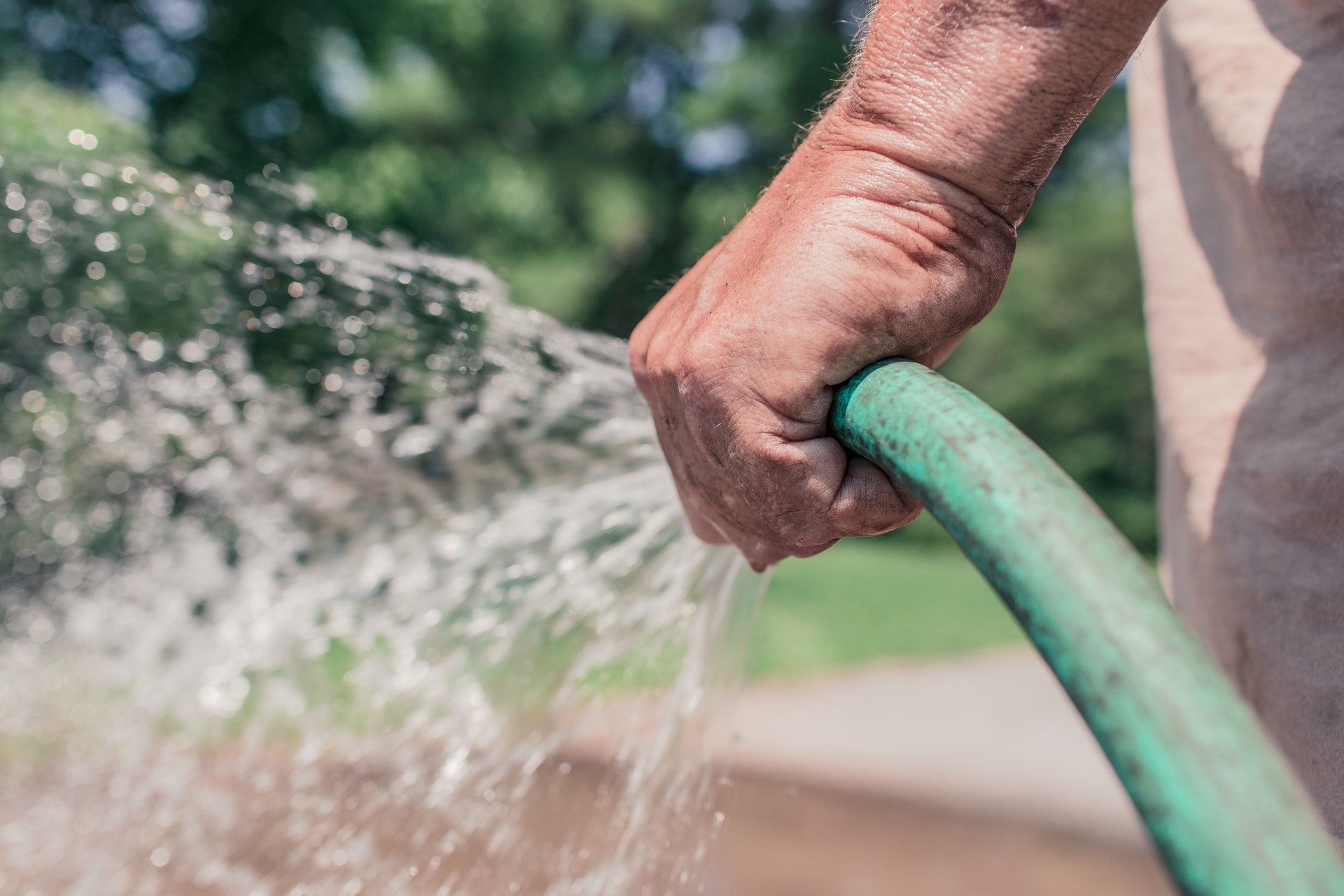How and When to Water Your Trees and Shrubs
- Posted on
- 0

One of the most common questions that we get at Bates Nursery is how and when to water trees and shrubs. Although there is no one-size-fits-all method, we have put together some useful tips that will help you to water properly when your trees and shrubs most need it. Keep in mind that when you plant a tree or shrub in the spring, it will need to be watered more frequently during the hot summer months than a tree or shrub planted in the fall, when Middle Tennessee has milder weather and receives more precipitation.
Water Deeply
Watering deeply can be a tricky concept. Picture your tree or shrub’s roots. You want to ensure that you are fully saturating the roots when you water. This promotes healthy and hardy root growth. Most tree roots are concentrated in the upper 12”-18” of soil. To hydrate these roots, you must saturate at least 10” into that soil each time that you water. The frequency and amount that you water will depend on the stage of your tree or shrub’s life as well as the time of year and the weather.
Trees and shrubs need supplemental water in the first two years of their life, and mature plants may need supplemental water during times of drought or extreme dryness. A rain gauge will help you to determine when and how much water your mature tree or shrub may need by measuring the amount of water it is receiving from precipitation.
For your newly planted tree or shrub, begin by watering the area around the root ball every other day or so. Continue watering at this frequency for a few months. Slowly increase the area watered to the area under the canopy, then past the dripline with mature trees. As you do this, taper the frequency of watering to once every few days, once a week, and so forth. This process will take about 2 years in total for most trees and shrubs. The purpose of this is to develop a deep and enduring root system so that your tree will thrive for years to come. Watering too frequently may make your tree or shrub dependent on supplemental water, making it less resilient.
Water Near the Base
Watering near the base of the tree or shrub ensures that you are getting the most bang for your buck each time you water. Don’t water directly on the trunk, however, as this may cause rot or attract pests and disease.
A significant amount of water is evaporated in spray systems. Additionally, depending on the tree or plant, foliage may prevent water from reaching the roots if it is sprayed from overhead. Wet foliage means more pests, fungus, and disease.
A soaker hose is a great addition to any gardener or landscaper’s toolbox. These hoses allow you to saturate the ground in a concentrated area, and are easy to reposition and remove as needed. The key when watering trees is low and slow—this gives the roots time to absorb the water fully.
Pay Attention to the Time!
Always water in the early morning, especially during the warm summer months. This ensures that the water doesn’t evaporate as quickly as it would later in the day, and also gives the foliage and soil time to dry. Watering at night causes prolonged moisture in the soil and on the foliage, creating a habitat for pests, disease, and fungus.
Observe Your Tree!
Many broadleaf and deciduous trees will tell you when they need water. Observe your trees each day. If you’re noticing that they’ve lost some luster or that the leaves are wilting, you may need to water. Keep in mind that deciduous trees naturally begin losing leaves during the fall, and that this is a normal part of the tree’s life cycle.
Mulch
Add a 2-3 inch layer of mulch about 2-3 feet in diameter around your trees. Do not mulch too heavily, or put mulch against tree trunks, as this may cause rot. Mulch prevents water competitors like weeds and grass from growing. Mulch also acts as a protective layer-retaining moisture in the soil even during the heat of the day.
We hope that these tips help you to plant trees that are healthy and resilient for years to come. Our friendly staff of horticultural experts here at Bates Nursery are always happy to help if you have any specific questions regarding your plants, trees, or shrubs. Stop by or give us a call, and stay cool this summer!
Want to learn more? Check out these great articles:
HGTV: The Proper Way to Water Your Garden
Gardeners: How and When to Water Trees
UT Extension: How to Care for Your Tree
Phytosphere: How to Water Your Tree
Morton Arboretum: Watering Trees and Shrubs

Hi Diane, we recommend cutting back on watering in the winter months, unless if it hasn't rained in a couple of weeks. If you're experiencing winter drought conditions, a single deep watering with the hose set on barely a trickle for 30 minutes would suffice. for a couple of weeks at a time.
In a typical Tennessee Winter, we receive good rainfall and with the cooler temperatures, that means less evaporation. This is typically why winter is a great time to plant most landscape plants since the soils is wet and workable, and the plants don't need much care until it starts heating up again. Hope this helps and remember, too much water can kill your plants faster than too little.
not enough information on how often to water deciduous trees and bushes once they've dropped there leaves.